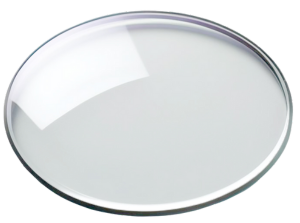
Top Prescription Lens Options for Sports Enthusiasts
Whether you’re scaling a mountain trail or powering through a cycling circuit, clear vision is a game-changer. 👓 But for athletes who wear prescription glasses, finding eyewear that seamlessly balances clarity, comfort, and durability can be challenging. Thankfully, there's a range of prescription lens options designed with active lifestyles in mind. Let’s dive into the top lens choices for sports enthusiasts looking to enhance both performance and protection.
Why the Right Prescription Lenses Matter in Sports
Precision vision can mean the difference between peak performance and missing the mark—literally and figuratively. The right lenses ensure you’re not only seeing clearly but also safeguarding your eyes against impacts, UV rays, and environmental factors like dust and wind. For individuals who rely on prescription eyewear, compromising on vision or safety is not an option.
1. Polycarbonate Lenses: Lightweight & Impact-Resistant
Polycarbonate lenses are a top choice for most sports activities. They’re lightweight, which minimizes pressure on your nose and ears during extended play, and they’re also highly impact-resistant—making them ideal for high-contact sports like basketball, soccer, or mountain biking. 💥
Bonus: Most polycarbonate lenses come with built-in UV protection, keeping your eyes safe from harmful sun exposure during outdoor activities.
2. Trivex Lenses: A Close Competitor With Extra Clarity
Trivex lenses offer similar benefits to polycarbonate but with enhanced visual clarity and a slightly lighter build. They're a fantastic middle-ground for athletes who want both crisp optics and durability. While they may come at a slightly higher price point, their optical quality often makes them worth the investment.
3. High-Index Lenses: For Strong Prescriptions
If you have a strong prescription, traditional lenses can be thick and heavy—definitely not ideal when you're on the move. High-index lenses bend light more efficiently, allowing them to be thinner and lighter. This minimizes distortion and discomfort, which is crucial for maintaining focus during intense physical activity.
Keep in mind, though: high-index lenses aren’t as impact-resistant as polycarbonate or Trivex, so they're better suited for low-impact activities like golf, running, or yoga.
4. Photochromic (Transition) Lenses: Light-Adaptive Convenience
These light-sensitive lenses adapt to changing lighting conditions, darkening in bright sunlight and clearing indoors. For outdoor athletes—joggers, cyclists, or tennis players—photochromic lenses eliminate the need to switch between prescription sunglasses and regular eyewear. 🌤️
However, note that they may not darken as effectively inside a car, as the windshield blocks much of the UV light that triggers the change.
5. Polarized Prescription Lenses: Reducing Glare
For athletes who spend lots of time around water or snow—think kayaking, fishing, or skiing—glare can be a serious issue. Polarized lenses filter out harsh reflections, improving visibility and reducing eye strain. They’re also available in prescription form, allowing you to enjoy both sun protection and sharp vision without compromise. 🏔️
Be mindful that polarized lenses may affect depth perception in fast-moving sports like downhill biking or certain ball sports, so they’re best used selectively.
Key Coatings to Boost Performance
Beyond choosing the right lens material, the right coatings can make all the difference. Here are ones to consider:
- Anti-fog coating: Prevents condensation during intense workouts or humid conditions.
- Scratch-resistant coating: Protects lenses from wear and tear during outdoor adventures.
- Anti-reflective coating: Reduces glare and improves contrast—great for indoor sports arenas or night-time activities.
Final Thoughts: Your Sport, Your Vision
No two sports are alike—and neither are the vision needs of their athletes. Whether you're racing down the slopes or setting new records at the track, investing in the right prescription lenses can improve not just your vision, but your overall performance and enjoyment. 🏅
When selecting the best lens type for your sport, always consider the activity’s specific demands—speed, contact level, environmental exposure—along with your personal prescription needs. With today’s advanced eyewear options, you don’t have to sacrifice sight for success.



